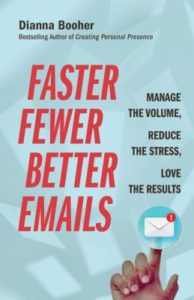


Good writing is rewriting. I’ve not put quotation marks around that comment because it would be difficult to attribute it to only one author. So many famous writers have uttered a slight variation of that sentiment: Ernest Hemingway, James Thurber, William Zinsser, Robert Graves, Truman Capote. Take your pick and give them credit.
I once heard professor Grace Paley, a Pulitzer Prize short-story finalist, speak at a writer’s conference, where she told our audience about her own rewriting habits. When asked how many drafts she typically did of her short stories, she chuckled: “I typically do about 6 to 7 drafts before I take a story to class for critique—and tell my students it’s a first draft!”
Getting things right the first time around has also eluded me on each of my 49 books. But I’ve picked up a few techniques that have definitely made first drafts faster and better.
Novelists divide themselves into two camps: pantsers and plotters. Pantsers write by the seat of their pants, without an outline or plot in mind at the beginning of the story. Plotters, on the other hand, outline their story scene by scene from start to finish before they begin.
When you’re writing nonfiction, I highly recommend the plotter approach. Outlining first allows you to see the entire book before you start drafting. In fact, that outline essentially becomes your first draft. You can immediately spot overlaps and gaps. Seeing and eliminating such redundancies and gaps before you start helps you avoid these problems before you start drafting.
Outlining chapter by chapter is as inefficient as building a house room by room.
I always tell book coaching clients to write as fast as they can on that first draft. For a 40- to 50,000-word nonfiction book, you’ll complete a first draft in about 7-14 days.
Editing is a totally different step. Later, you’ll go back and clean up the sentences. Editing for clarity, conciseness, style, and grammar—all of that comes later. In this drafting step, don’t worry about format, layout, or polished chapter titles, trying to make them clever, funny, or provocative. First, just concern yourself with making them straightforward, informative.
Your goal here: Just get words on paper or the screen. You need something to work with in the editing stage to turn “content” into something good, better, and finally best.
As you write, you’ll think of new ideas that could go into the draft. If you’re at the right spot to add them, fine. But never circle back to make additions, or you’ll lose momentum. If you’re in Chapter 5 and you think of a perfect illustration for Chapter 3, simply make a quick note of it and drop it into a “To Be Added” folder. During the second draft, you can insert that illustration with complete detail.
But at the present, don’t let new ideas buzzing overhead cause you to lose time trying to decide if and where they belong in the manuscript. Keep moving forward.
Authors dread cutting out perfectly good ideas—even well-written ideas that just don’t belong in the book, or in a particular chapter or spot in the book.
So what happens in that case? Unfortunately, many authors treat excess writing like they treat excess food. They hold on to it. Now leftover pizza can be a good thing. You pop it into the microwave the next day, and it tastes fine. But leftover tossed salad a week later? Not so tasty.
For authors, they face the same ambivalence as cooks when it comes to editing their book. As they edit, they identify a long story and have a gut feeling that the section should be cut. It seems draggy or out of place, or maybe it doesn’t quite illustrate their point. But gee, it took them a long time to draft it. So they hesitate to cut it.
The solution? Copy that section or story into a folder called “Leftovers.” Give the cut a title: “Story about X.” Then delete it from your book manuscript.
Later, if you decide to use the story somewhere else in the book, you can easily retrieve it. If you have enough of these leftovers, you may have enough for another book—or at least content for other related blogs or articles!
The idea here: Never fear to cut! Aim for crisp writing. Don’t let indecision be a drag on your productivity. When in doubt, chop it out!
Concerned about the security of your writing? Read Security Essentials for Writers: Safeguarding Your Work in a Digital Age from Porch.com.
Learn how to take these tips to more types of writing with Faster, Fewer, Better Emails.
